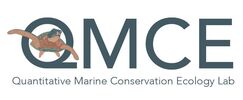Using quantitative methods to tell ecological stories
“The word model sounds more scientific than the word fable or tale, but I think we are talking about the same thing.” |
“The word model sounds more scientific than the word fable or tale, but I think we are talking about the same thing.” |
"In the end we will conserve only what we love, we will love only what we understand, and we will understand only what we are taught"
- Baba Dioum 1968
